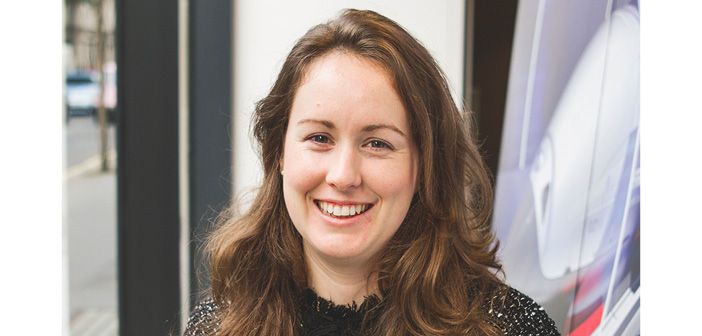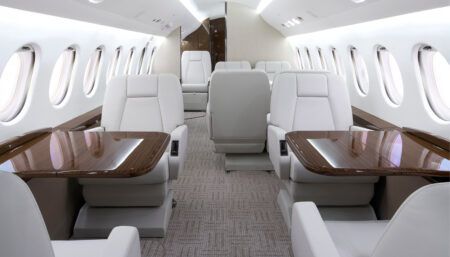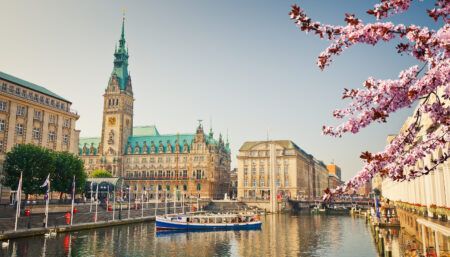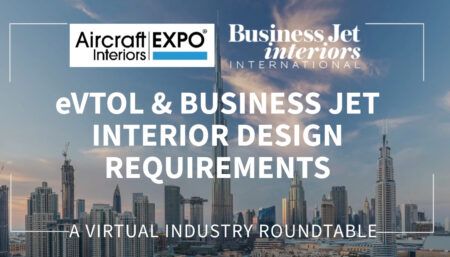Kyle Scorgie, project head, CMF, at PriestmanGoode, discusses industry trends – from cabin hygiene to NFTs
What aesthetic trends have you noticed lately?
Increasingly, our clients in this market are less driven by trends, but around very personal preferences. A client might present a colour or object they particularly like. Part of our service is finding a solution to either match that colour exactly, or translate that object into a range of material options, and then make that work in a certified aviation context.
The other fast-developing trend is combining soft materials with technology. Clients are looking for the latest developments in lighting and gesture controls, as one example, but they must be completely hidden.
What material innovations have caught your eye?
We’ve been particularly excited by new lightweight composites that are difficult to tell apart from natural materials and can be backlit. Ever on the search for bespoke solutions, we’ve even commissioned artists to recreate one-of-a-kind natural materials to achieve exact colour matches and lightweight properties.
Is the pandemic impacting customer requests?
On the one hand, the process slowed down while manufacturing was in lockdown, giving us longer for development. That led us to some outcomes that really broke new ground. On the other hand, there’s a renewed sense of urgency with some projects and we’ve found ways to move through design phases at greater speed, benefitting from visualisation and VR.
Will NFTs impact the industry?
We have successfully delivered projects that feature NFTs and other forms of digital art on board. It is an exciting development for aviation interiors, and we expect more requests from the ultra-personalised market. For a long time, clients have asked us to replicate interiors from their homes and digital displays are now part of that request.
What IFE technologies are trending? Will the metaverse take off in business aviation?
We frequently use the expertise of our in-house CGI and visualisation team to share iterations during the design phase with clients and allow them to select from alternatives at the touch of a button. It’s very popular as it’s such an efficient use of clients’ time and allows for greater exploration.
What other trends are in play?
Hygiene is just as important for private clients as it is for the commercial sector. The innovations that we developed in our Pure Skies concept – such as reduced split lines in seats, seam-welded fabrics, UVC cleaning and smart materials with embedded properties to support cleaning and maintenance – have featured prominently on recent briefs.
Lighting continues to provide enormous opportunities for innovation. It can be used to create immersive experiences that can’t be achieved in other ways. We can instantly change patterns or highlight features and create the impression of texture. As we all know, lighting has the potential to enhance mood and wellbeing and those are key priorities for clients.
Although each brief and the way we respond is entirely built around the needs of the client, we have also noticed more requests for simplicity, to remove detailing for a very pared-back interior. It will be interesting to see if that becomes a recurring theme.
This interview was first published in the March/April 2022 edition of Business Jet Interiors International.





